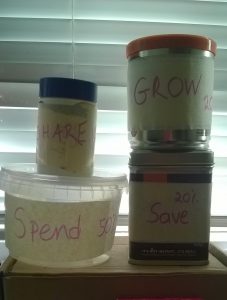So my last post was all about baby sign and what the current research says about it. You can read that post here. This post is about 4 simple but proven ways to nurture the communication between you and your baby, warm your heart, and have fun together. For their speech, language, and communication to grow, we need to pay attention to these 4 small yet powerful things.
Our babies are born wired to communicate. They hear language before they’re even born. And they recognise their mother’s voice from very early on. I will always remember the moment I realised my baby had recognised my voice on the outside for the first time, the night she was born. I can still see clearly the moment I said ‘Hello’ as I held her and her eyes widened and her head turned towards me- we had just had our first ‘conversation’. I took the first turn and she responded. It’s in those micro-moments that speech, language, and communication develops.
#1 Be face to face
Once she’s born, your baby is attentive to your face. She looks at you so intently with those big eyes! If you really tune into her facial expressions and movements you can pick up on what she’s interested in. This is a key part of becoming a responsive communication partner. Look at where your baby’s gaze goes- what is she looking at? I remember my little girl reacting to classical music on the radio. I could see her facial expression register it and she kind of looked around to see where was it coming from and made some sounds of her own. And she was only a few weeks at this stage. Talk about what you think she’s reacting to. Maybe there was a sudden noise and she jumped a little and looked to the source of the sound. Tell her what it’s called. And it’s never too early to talk about emotions so you could say something like Oooh that was noisy. You didn’t like that. Attachments are initially formed through the senses so by looking at your baby, smiling with love in your eyes, and holding her close, you’re building that attachment in addition to sowing the seeds for speech, language, and communication.
# 2 Imitate
Not your baby imitating you but you imitating your baby! So let’s say she’s lying on the changing mat, looking up at you and you’re looking at her and smiling at her. Then she makes some sounds like aaaaa or ga ga. You can repeat back to her what she’s just said. Babies love this as it’s a moment of connection and helps them realise that their sounds cause something to happen. So I make a sound and my mummy smiles and talks back to me. I like that! You can imitate more than just her sounds. You can also imitate her facial expressions and gestures that she makes. When you do this you’re modelling turn taking for your baby and strengthening the connection between you. One of the early ways of attaching to someone is through sameness and seeing someone imitate your sounds and gestures strengthens that attachment.
# 3 Embrace Baby Talk
I remember when I was pregnant someone saying to me ‘I hope you won’t be doing any of that baby talk with the baby’. I felt so annoyed! I had no idea how to change a nappy or even dress a baby but I was sure I’d know how to talk to her! And I was even more annoyed by the unexamined thinking behind such a statement. Baby talk is there for a reason! It has fancy names like motherese or child-directed speech in the research. And it’s a really cool thing with very distinct characteristics that engage our babies in interaction. It helps lay the foundation for future conversations and speech and language development. You might feel self-conscious about it yet your baby’s not judging you- they’re enjoying every moment! So when you talk to your baby you probably find yourself exaggerating your intonation; sounding way more excited than you would talking to another adult! We also speak more slowly, wait longer for a response from them than we would with a grown-up. And our facial expression tends to be livelier too. How does it help your baby? Well, our babies are engaged in a big job of working out where words begin and end from the stream of speech that they’re hearing. So when we simplify things and highlight important words it can make it easier for babies to recognise the chunks of sound that make up each word. When you comment on what they’re interested in, it’s also natural to repeat information and key words in different ways. So let’s take the example of the music and my little baby. Our conversation would have gone something like this:
Baby: oooh + eyes wider, brow furrows, she turns her head or her eyes move towards the source of the sound
Me: ooh that’s music……you’re hearing music…lovely music.
Baby: continues to respond as above, maybe making different sounds
Me: more music….oh the music stopped….the music ended… the music’s gone
And so on. So it’s never too early to have a conversation with your baby
#4 Wait
So you know it’s important to talk to your baby because they love the sound of your voice and it helps develop their speech, language, and communication. It’s also important too to wait for them to take their turn. Now of course when they’re babies what you’re waiting for and looking out for are very small moments and changes. So it could be their eyebrows lift up or their eyes widen or they make a sound or they move an arm or their tongue pokes out. That’s their turn and it’s important to wait for them to take their turn so resist any temptation to jump in! Once they have responded in some way, then you take your turn.
So that’s it! 4 simple but very effective ways to help your baby’s communication. When you become a tuned in, responsive communication partner, this can help you work out what they’re trying to communicate and can help with frustration…your and theirs! More about frustration in my next post.
If you want even more resources for developing your skills as a tuned in communication partner, be sure to visit the Talk Nua Shop here.
If you like this post, please pass it on to your friends.
Let’s get talking!
MP

















